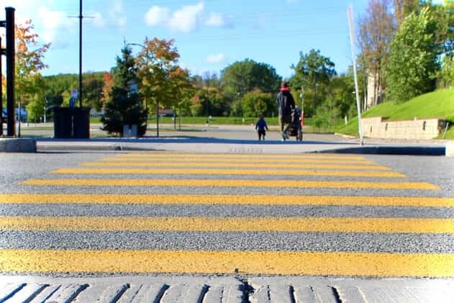Who is at fault if you hit a jaywalker in Texas? If the pedestrian was truly jaywalking, which is not the same as just walking in the street, then it is likely that they are liable, not the driver. At the least, liability would probably be split in favor of the driver, which prevents the jaywalker from pursuing financial recovery.
However, if the person was walking in the street and not jaywalking, then the driver could be found as the only party liable for the pedestrian accident or car accident, depending on how you define it. In that situation, the driver would probably owe compensation to the pedestrian.
Texas Jaywalking Laws & Rules
In Texas, a pedestrian has the right-of-way only when they are crossing at a dedicated crosswalk and when there is no signage telling them not to enter the roadway. A pedestrian who attempts to cross the street against a “do not walk” sign or without a crosswalk is technically jaywalking. The law requires jaywalkers to yield the right-of-way to approaching vehicles whenever possible. If they do not, then they could be liable for an accident.
Sometimes, there is no available crosswalk nearby, but this does not change the jaywalking law. When there’s no crosswalk and a pedestrian must cross the road, they still need to yield the right-of-way. Furthermore, pedestrians are expected to take reasonable caution when using a crosswalk. Stepping directly in front of a moving vehicle that was obviously about the enter the crosswalk due to its rate of speed would probably cause the pedestrian to be liable for the accident, even though they were not jaywalking.
Of course, the inverses are true and important. Drivers need to yield the right-of-way to pedestrians who are lawfully using a crosswalk or who have already entered the road. That is to say, a jaywalker in the road is not an open invitation for a driver to act recklessly because they still owe it to the jaywalker to try to avoid hitting them.
Texas Modified Comparative Negligence Laws & Jaywalking
Texas uses a modified comparative negligence law when determining liability in personal injury claims, like a jaywalking accident claim. Under this rule, no party can recover damages from another if they are found to be at least 51% liable or at fault for the accident, i.e., their own injuries and damages.
Modified comparative negligence makes it difficult for jaywalkers to file a successful injury claim. In most situations, a pedestrian who was jaywalking as described by Texas law will be found at least 51% liable, which bars them from making a recovery at all. At that point, the driver who is less liable could possibly sue the jaywalker for damages, assuming there are any to pursue.
If you have questions about filing a jaywalker accident claim, either as the pedestrian or the driver, then you can call (806) 304-0447 to connect with Wood Law Firm, LLP. Free consultations for inquiring clients are available at our office in Amarillo.

